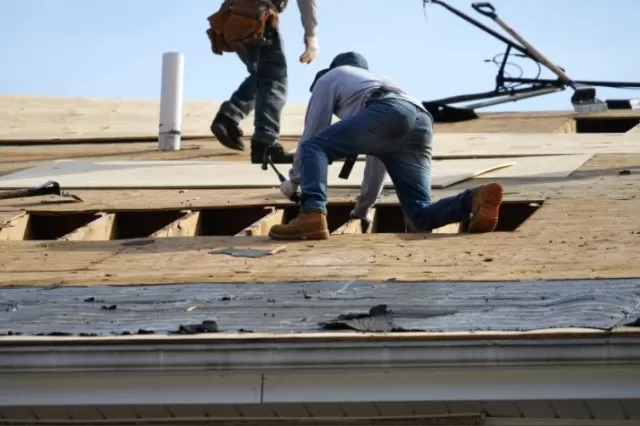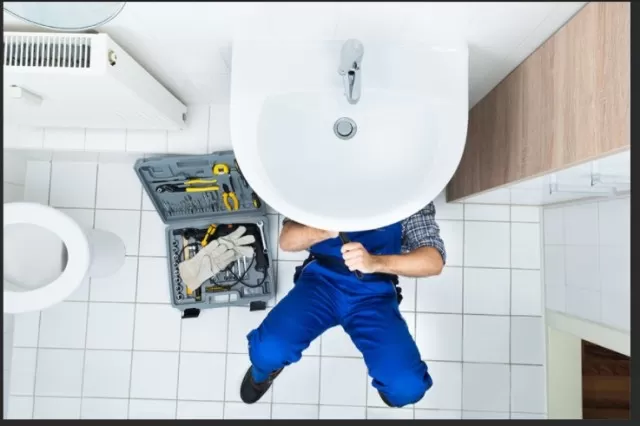Key Home Repair Emergencies Covered by Your Fund. Indeed, unexpected repairs and expenses can be one of the less enjoyable aspects of homeownership.
However, being financially prepared for these inevitable situations can alleviate stress and help you tackle home fixes with ease.By taking proactive steps to prepare financially for home repairs and keeping up with regular maintenance, you can minimize the impact of unexpected expenses and maintain the integrity and value of your home. Being financially prepared will bring you peace of mind and enable you to address repairs promptly and efficiently when they arise.
Achieving Financial Security: The Optimal Savings for Homeowners

Owning a home undoubtedly brings a sense of pride and stability, but it also comes with its fair share of financial responsibilities.
From the regular monthly expenses like mortgage, taxes, and insurance to the unexpected costs of emergency repairs, homeowners need to Be Prepared to weather any fiscal challenges that come their way.
The age-old question remains: “How much should I save?” In the pursuit of a stress-free homeownership experience, setting aside an appropriate amount of money for maintenance and unforeseen repairs becomes paramount.
Let’s explore some expert guidelines to help you achieve financial security and safeguard your cherished abode.
The One Percent Rule, as advocated by Discover, suggests allocating at least one percent of your home’s value annually to cover maintenance costs.
By adhering to this principle, you can ensure that your property remains well-maintained and retains its value over time. For instance, if your home is valued at $360,000, reserving $3,600 per year or $300 per month for maintenance purposes would be prudent.
Alternatively, another widely followed approach is to save 10 percent of the combined total of your property taxes, mortgage, and insurance payments.
This method allows you to create a comprehensive savings plan that encompasses various financial aspects of homeownership. By setting aside this portion of your monthly expenses, you’ll have a safety net ready for any unexpected situations that might arise.
However, it’s essential to recognize that these rules of thumb are not absolute and may vary depending on your specific circumstances.
Factors like the age of your home, its condition, and the climate in your area can significantly influence the frequency and cost of necessary repairs. Therefore, it is wise to adjust your savings strategy accordingly.
Moreover, it’s worth noting that prudent financial planning extends beyond home maintenance.
Saving for other long-term goals, such as retirement or education expenses, should also be taken into account to achieve a well-rounded and secure financial future.
In conclusion, achieving financial security as a homeowner requires careful consideration and discipline.
By adhering to guidelines like the One Percent Rule or saving 10 percent of your housing-related expenses, you can pave the way for a stable and prosperous homeownership journey. As circumstances may evolve over time, it is essential to reassess and adapt your savings plan periodically.
By doing so, you’ll be better equipped to handle any financial challenges and savor the joys of homeownership without undue stress or worry.
Mending vs. Upgrading: Resolving the Dilemma of a Leaky Faucet
Leaky faucets can be a common annoyance in any household, whether they occur in the bathroom or the kitchen.
When faced with this pesky plumbing issue, homeowners often find themselves grappling with the decision of whether to repair the faucet or opt for a complete replacement. Each choice comes with its own set of considerations and costs, making it essential to weigh the options carefully.
Repairing a leaky faucet is often the first line of defense, and rightfully so.
In many cases, a simple fix can resolve the issue without incurring significant expenses. Armed with determination, basic tools, and the wealth of knowledge available on platforms like YouTube, many homeowners successfully tackle the repair themselves.
This approach not only saves money but also empowers individuals to become more hands-on with their home maintenance.
However, it’s important to recognize that not all leaks can be easily remedied.
In some instances, the faucet might have sustained significant damage, or its components may have worn out beyond repair. When faced with such a situation, replacing the faucet becomes the more practical and long-lasting solution.
Undoubtedly, replacing a faucet may involve a more substantial upfront cost compared to a repair job.
Faucet prices vary based on their design, quality, and additional features, so homeowners should allocate a budget accordingly. While the initial investment might seem higher, a new faucet can offer several benefits, such as improved water efficiency, enhanced aesthetics, and a warranty that ensures peace of mind.
Beyond the financial aspect, homeowners should also consider factors like the age of the faucet and the frequency of previous repairs.
If the faucet has been a persistent source of leaks and repairs over the years, replacing it might be the wisest course of action to prevent further hassles and expenses down the line.
In conclusion, the decision to repair or replace a leaky faucet hinges on a delicate balance of costs, effort, and long-term benefits.
Attempting a repair can be a rewarding DIY project for those with a little know-how, while a replacement offers the advantage of a fresh start and potential long-term savings. Whether you choose to fix the leak with some elbow grease or invest in a brand new faucet, addressing the issue promptly will ensure a more enjoyable and stress-free living environment.
Critical Considerations: Assessing Roof Repair versus Replacement

For homeowners, the prospect of roof issues can bring about a sense of financial concern, as roof repair or replacement stands as one of the most substantial expenses they may face.
Determining whether to proceed with repairs or opt for a complete roof replacement necessitates a thorough evaluation of various factors, each playing a pivotal role in the final decision.
The cost of roof replacement hinges on several critical elements, including the size of the roof, its pitch, and the materials chosen.
The larger the roof, the more materials and labor will be required, potentially driving up the overall expense. Additionally, the roof’s pitch, which refers to its steepness or slope, can influence the complexity of the replacement process, affecting the final cost.
The choice of roofing materials can also significantly impact the budget for a replacement.
Premium materials, such as slate or metal, often come with a higher price tag, while more budget-friendly options like asphalt shingles can offer a more economical solution. Weighing the benefits, longevity, and aesthetic appeal of different materials is crucial in making an informed decision.
In contrast, opting for roof repairs can provide a more budget-friendly alternative in certain scenarios.
Repair costs typically encompass labor and materials required to address specific issues, such as leaks or damaged sections. This option becomes particularly favorable when the roof’s overall condition remains relatively sound, and the issues are confined to isolated areas.
It’s essential to recognize that the viability of repairs depends on the age and condition of the roof.
If the roof is approaching the end of its lifespan or has undergone numerous repairs in the past, a complete replacement might be a more prudent long-term investment to avoid ongoing maintenance expenses.
When contemplating between repair and replacement, homeowners should consider the cumulative costs involved.
While repairs might present a lower upfront expense, recurrent issues can add up over time, making replacement a more cost-effective solution in the grand scheme of things.
Moreover, a roof’s structural integrity and the presence of any underlying damage should be carefully assessed.
If the roof’s core structure is compromised or there are substantial issues hidden beneath the surface, a replacement might be unavoidable to ensure the safety and longevity of the home.
In conclusion, when faced with the decision of roof repair or replacement, homeowners must engage in a comprehensive analysis of their roof’s condition, budgetary constraints, and long-term goals.
While repairs can be an immediate cost-saving measure, a well-timed roof replacement can provide peace of mind, enhanced durability, and potential savings in the long run. Seeking professional advice from a qualified roofing contractor will help in making an informed and financially sensible decision that ensures the safety and value of the home.
Shielding Your Home: Navigating the Costs of Pest Control
For homeowners, the unwelcome presence of pests can quickly become a distressing reality.
Ants, mice, termites, and other bothersome creatures can invade your living space, posing potential health risks and structural damage. Addressing these pest-related concerns requires a proactive approach, but the costs involved can vary significantly based on several key factors.
The type of pests infesting your home plays a crucial role in determining the expenses of pest control.
Common household pests like ants and mice typically involve relatively straightforward and cost-effective solutions. Simple traps, baits, or insecticides might suffice to manage these nuisances effectively.
However, more serious infestations, such as termite colonies, can present more complex challenges and higher costs.
Termites can cause significant damage to the structural integrity of a home, necessitating comprehensive treatments and ongoing monitoring. Eradicating termites often involves specialized techniques, like termite baiting systems or soil treatments, which can add to the overall expenses.
Regional factors also influence the costs of pest control services.
Different areas of the country may experience varying levels of pest activity, and the prevalence of certain pests can impact pricing. Additionally, the availability of pest control companies and local regulations might affect service costs.
While some homeowners might attempt do-it-yourself pest control, seeking professional assistance is often the more effective and safer choice, especially for more persistent infestations.
Professional pest control services not only employ experienced technicians but also use targeted and eco-friendly treatments, reducing the risk of harm to both residents and the environment.
Furthermore, the size of your property and the extent of the infestation are essential considerations.
Larger homes or properties might require more extensive treatments, which can translate to higher costs. Early detection and prompt action can help mitigate the scope of the infestation and potentially lower overall expenses.
Taking preventative measures can also play a significant role in reducing future pest control costs.
Regular inspections, sealing cracks and crevices, and maintaining cleanliness can help deter pests from infiltrating your home in the first place.
In conclusion, addressing pest infestations requires a tailored approach that considers the specific type of pests, the region, and the size of the property.
While costs can vary, investing in professional pest control services and adopting preventive measures can safeguard your home and ultimately save you from more significant expenses caused by extensive damage. By promptly tackling pest-related concerns, you can maintain a healthy, pest-free living environment and protect the value of your property.
Clearing the Way: Understanding the Costs of Dealing with Clogged Drains

Dealing with clogged drains is undeniably frustrating, be it in your sink, shower, or even the main sewer line of your home.
When faced with such a nuisance, seeking professional assistance is often the most effective way to get things flowing smoothly again. However, understanding the potential costs involved can help you prepare for the expenses that may arise.
Hiring a professional to address a clogged drain typically comes with a flat fee for their service call, which covers the cost of them coming to your home and assessing the issue.
In addition to this initial fee, you’ll be charged for any time and materials required to fix the problem.
For relatively straightforward clogs in sink or shower drains, the average cost of repair is estimated to range from $100 to $225, as suggested by Thumbtack.
This cost can vary based on factors such as the severity of the clog, the accessibility of the affected area, and the rates of the plumbing service you hire.
On the other hand, clearing a clog in the main sewer line is generally a more complex and labor-intensive task, leading to higher costs.
This extensive job might set you back upwards of $800, depending on the extent of the blockage and the specific methods employed by the plumbing professional to resolve the issue.
It’s important to recognize that these cost estimates are average figures and can differ based on your location and the specific service providers in your area.
Obtaining multiple quotes from reputable plumbing companies can help you compare prices and make an informed decision.
In some cases, you might be tempted to try DIY methods to clear the clog yourself.
While there are various products and tools available for this purpose, they may not always be effective and can potentially cause further damage to your plumbing if used incorrectly. If you’re unsure about how to handle the clog, it’s best to leave the task to a licensed plumber to avoid exacerbating the problem.
Preventing clogs in the first place is the most cost-effective approach.
Regularly cleaning drains, using drain guards to catch debris, and being mindful of what goes down the drain can help minimize the occurrence of clogs and potential plumbing expenses.
In conclusion, dealing with clogged drains can be a hassle, but seeking professional help when needed can ensure the issue is resolved effectively.
Understanding the potential costs associated with various types of clogs can help you budget for such situations. By being proactive in drain maintenance and promptly addressing clogs, you can keep your plumbing system in good condition and avoid more significant expenses down the road.
*The information is for reference only.